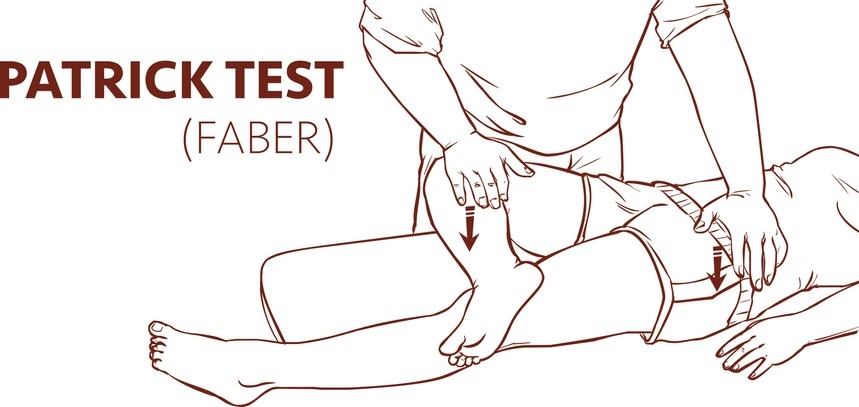Limping Child
History
- Trauma
- Precipitating events: viral infection preceding transient synovitis or reactive arthritis
- Associated muscle weakness? neuromuscular disease
- Birth and Developmental History: breech, family history of hip dysplasia, walking history, delay in motor milestones, regression
Examination
Gait
- Antalgic
- High-stepping - neurological conditions
- Tiptoe - limb length discrepancy or congenital talipes
- Trendelenburg gait - developmental dysplasia of the hip
- Circumduction - limb length discrepancy
 FABER (Flexion, Abduction, and External Rotation) test: groin pain indicates a hip problem, pain in the SI area suggests sacroiliac joint disease
FABER (Flexion, Abduction, and External Rotation) test: groin pain indicates a hip problem, pain in the SI area suggests sacroiliac joint disease
Red Flags
- Pain waking the child at night - Malignancy
- Signs of redness, swelling, or stiffness of the joint or limb - Infection or inflammatory joint disease
- Weight loss, anorexia, fever, night sweats, or fatigue - Malignancy, infection, or inflammation
- Unexplained rash or bruising - Haematological or inflammatory joint disease, or non-accidental injury
- Limp and stiffness worse in the morning - Inflammatory joint disease
- Severe pain, anxiety, and agitation after a traumatic injury - An evolving compartment syndrome
Differential
All ages
- Fracture/soft-tissue injury
- Cellulitis
- Non-accidental injury (NAI)
- Neoplasm
- Septic arthritis
- Neuromuscular
- Osteomyelitis
Age 1–3 years
- Septic hip
- Developmental dysplasia of the hip (DDH)
- Toddler’s fracture
Age 4–10 years
- Perthes’ disease
- Transient synovitis
Age 11–16 years
- Slipped capital femoral epiphysis (SCFE)
- Juvenile rheumatoid arthritis
- Osteochondritis dissecans
- Osgood–Schlatter disease
Developmental Dysplasia of the Hip (DDH)
Congenital condition of abnormal hip joint development
Occurs more commonly in firstborn children, in those with a family hostory, breech presentation
Examination findings: asymmetric skin folds, limb shortening, and reduced hip abduction
If untreated can develop to osteoarthritis
Sources
- RCGP EKUL: The limping child: when to worry and when to refer
- The limping child — when to worry and when to refer: a GP’s guide; Hassan Raja, Shehzaad A Khan and Abdul Waheed; British Journal of General Practice 2020; 70 (698): 467. DOI: https://doi.org/10.3399/bjgp20X712565